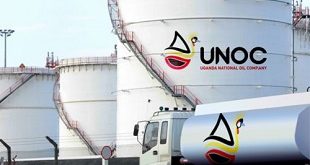
Kampala, Uganda | THE INDEPENDENT | Following the rebasing of the Ugandan economy, it has been revealed that the industry sector, which comprises of construction, mining and quarrying, manufacturing, and electricity supply, experienced the biggest revision upwards.
According to Uganda Bureau of Statistics (UBOS), industry sector’s contribution to GDP jumped by 51.4% from Uganda shillings 18.7trillion to Shs 28.2 trillion as at 2016/17 financial year.
Aliziki Kaundha Lubega, the director of macroeconomic statistics at Ubos, reported Agriculture and services revision was much smaller.
This pushed the GDP to 108.5tn compared to 91tn it had been thought to be. The figures were announced on Thursday and there will official launch of the figures later this month.
This is after UBOS started using a new base year of 2015/16 instead of the 2009/10 financial year to calculate Uganda’s value of the economy. Rebasing is the process of replacing an old base year with a new and more recent base year.
A base year provides the reference point to which future values of the GDP are then compared.
But what is the industrial sector made of?
UBOS classifies manufacturing, mining and quarrying, construction, electricity supply, and water and sewerage activities.
Of all the construction activities and manufacturing contributed the biggest growth.
Under manufacturing, the growth was seen majorly in manufacture of dairy products (30% growth), processing and preservation of meat (21%), and manufacture of iron and steel (8%).
On construction, according to the report, it grew by 11.3% more than the published 5.3% in 2016/17.
Uganda has dedicated the highest budget to roads construction for the last seven years, with an average spend of up to 3 trillion shillings per year. This means that more of this value was driven up by roads construction.
The infrastructure construction industry has seen had ripple impact on components like iron and steel that supply roads, dams, and bridge construction projects, according to industry players.
In the real estate, another component of the construction industry, billions of shillings have been spent on construction of apartments and upscale malls in anticipation of huge spending from oil and gas sectors.
The rebasing showed that mining and quarrying grew 32.5% in 2016/17 compared to the decline of 5.7% published. The strong growth in the activity was attributed to the informal mining and oil and gas exploration activities.
For oil and gas, this is before flagship projects like the refinery and the pipeline start off.
Paul Lakuma, a research fellow at Economic Policy Research Centre (EPRC) said he didn’t doubt the numbers, especially on oil and gas contribution. He said any investment in that area pushes up the sector’s contribution because of the big margins. “Yes the investment in oil and construction sector has been very significant in the last five years,” he said.
UBOS shows that electricity supply was another boost to the industrial sector growth. The activity captures power generation, transmission and distribution.
Electricity supply activities grew by 8.9% in 2016/17 compared to a growth of 8.3% that had been published. Also, water supply and sewerage was reported to have been overstated after the rebasing. According to UBOS, water supply activities grew by 5.6% in 2016/17 compared to a growth of 6.8% published.
*****
URN
 The Independent Uganda: You get the Truth we Pay the Price
The Independent Uganda: You get the Truth we Pay the Price


